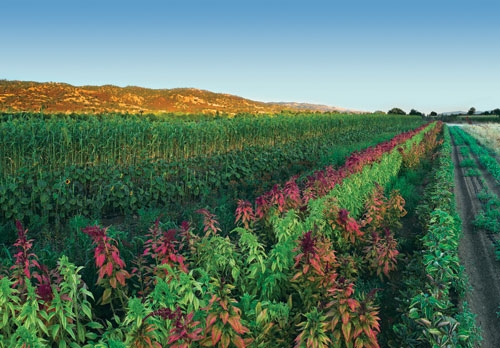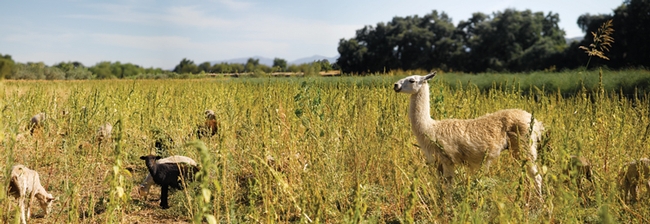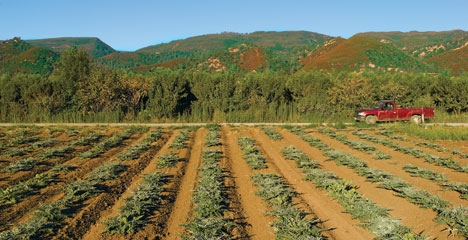Adapted from an article by Eileen Ecklund in Breakthroughs magazine.

But a group of UC Berkeley scientists say that continuing on our current path of industrial agriculture is simply not sustainable, given its enormous water, energy and chemical inputs, together with the new challenges posed by climate change, such as temperature and precipitation extremes.
With the launch of the interdisciplinary Berkeley Center Diversified Farming Systems late last year, UC Berkeley scientists are coalescing around a set of biodiversity-promoting farming practices they say are a promising solution.
Claire Kremen, a conservation biologist and associate professor in the Department of Environmental Science, Policy and Management, says that most or even all of the inputs that modern commercial farms require — chemical pesticides and fertilizers, wasteful amounts of water and energy, imported pollinators — were needed only because the monoculture-dominated landscapes created by industrial agriculture lacked biodiversity.
"From studying the pollinators, I realized that the way we conduct agriculture has basically required us to replace all of the ecosystem services that used to be in the agricultural ecosystem with substitutes," said Kremen, a 2007 MacArthur Fellow.
Generally speaking, a diversified farming system is one that promotes biodiversity across spatial scales, from plot to field to landscape. Crops are planted and livestock raised in combination, resulting in interactions that sponsor the functioning of the farming systems in ways that replenish natural ecosystems. Methods employed within a diversified farm may include minimal soil tillage, growing multiple crops together, planting cover crops, and interspersing trees and shrubs with crops and livestock.

These practices also provide pollination, pest and disease control, water purification, and erosion control. They help to build healthy, productive soil and reduce water use, as demonstrated by research conducted by Kremen and her Berkeley colleague Miguel Altieri in their respective labs and on farms in Napa, Sonoma, and Yolo counties.
But diversified farming systems aren't just about providing food and protecting the environment; to be truly sustainable, they must also provide a livelihood to farmers and farm laborers, and help support the communities that depend on them. UC Berkeley-based Cooperative Extension specialist Christy Getz has studied farm labor conditions and food security among agricultural workers. In one project, her team developed a program to help Southeast Asian refugee farmers in California scale up their operations, connect to alternative distribution systems, and access new markets for their produce, such as local schools.
Professor Alistair Isles focuses on the public policy, science policy, and sociological dimensions of making a switch back to diversified systems from industrial agriculture in developed countries. For example, he has studied the importance of innovative consumer tools that promote sustainable agriculture such issues as "food miles"—the distance that food travels from farm to table—and sustainable seafood evaluation methods.

If farmers could bring back many of the traditional practices that supported biodiversity, enhanced by the application of modern ecological science, Kremen believes that the world could produce more food while reducing agriculture's harmful effects, making it more sustainable over the long term.
And unlike organic agriculture, diversified farming systems are not an all-or-nothing approach; Kremen says farmers can implements all the systems the Berkeley center recommends based on its research, or simply implement selected techniques, such as planting native-plant hedgerows or using soil-enriching cover crops, and still make their farms more sustainable.